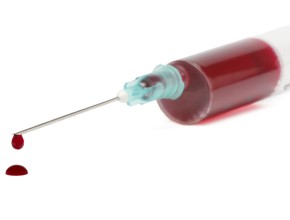Perioperative cardiac risk evaluation and management before noncardiac surgery: CCS guidelines
These clinical practice guidelines were prepared by the Canadian Cardiovascular Society using the GRADE system (see our introduction to GRADE). Strong recommendations were issued when, in the opinion of the guidelines panel, most individuals would want the recommended course of action, clinicians should use it in most situations, and the recommendation could serve as policy and a performance measure. With weak recommendations (suggestions), the majority of patients would want the suggested course of action but some may not, and clinicians should tailor their actions to individual circumstances and patient’s preferences.
The authors remind us that with over 200,000,000 major surgeries performed annually, around 10 million patients will suffer important cardiac complications.
The recommendations and suggestions issued by the authors apply to patients ≥45 years of age as well as those who are younger if they have significant cardiovascular disease: coronary artery disease, cerebrovascular disease, peripheral vascular disease, heart failure, severe pulmonary hypertension, or a severe obstructive intracardiac abnormality, such as aortic or mitral stenosis or hypertrophic cardiomyopathy.
In the guidelines, the authors refer to the Revised Cardiac Risk Index (RCRI) score, which assigns 1 point for each of the following: history of ischemic heart disease; history of congestive heart failure; history of cerebrovascular disease; use of insulin; preoperative serum creatinine levels >177 micromol/L; and high-risk surgery (ie, intraperitoneal, intrathoracic, or suprainguinal vascular surgery).
The statements included:
- Recommendation to measure brain natriuretic peptide (BNP) or N-terminal fragment of the prohormone BNP (NT-proBNP) levels in patients who are ≥65 years of age, those who are aged 45 to 64 years and have significant cardiovascular disease, or those who have an RCRI score ≥1 (moderate quality of evidence).
- Recommendation against performing preoperative resting echocardiography, coronary computed tomography angiography, exercise stress testing or cardiopulmonary exercise testing, and pharmacological stress echocardiography or radionuclide imaging to enhance the perioperative cardiac risk estimation (mostly low quality of evidence).
- Recommendation against the initiation or continuation of acetylsalicylic acid (ASA) for the prevention of perioperative cardiac events, except in patients who have recently received a coronary artery stent or who will undergo carotid endarterectomy (high quality of evidence).
- Recommendation against starting beta-blockers within 24 hours before surgery (high quality of evidence) and suggestion to continue beta-blockers in patients taking those medications chronically (low quality of evidence).
- Recommendation against alpha-2 agonist initiation within 24 hours before surgery (high quality of evidence).
- Recommendation for withholding angiotensin-converting enzyme inhibitors and angiotensin II receptor blockers starting 24 hours before surgery (low quality of evidence).
- Recommendation for facilitating smoking cessation before surgery (low quality of evidence).
- Recommendation for continuing statin therapy in patients receiving statins (moderate quality of evidence).
- Recommendation against preoperative prophylactic coronary revascularization in patients with stable coronary artery disease (low quality of evidence).
- Recommendation for daily measurements of troponin levels for 48 to 72 hours after surgery in patients with elevated presurgery NT-proBNP/BNP levels and in those with no such NT-proBNP/BNP measurements before surgery despite recommendations to use such a test: an RCRI score ≥1, age 45 to 64 years with significant cardiovascular disease, or age ≥65 years (moderate quality of evidence).
- Recommendation for initiating long-term ASA and statin therapy in patients who develop myocardial injury (moderate quality of evidence).
NIV for acute respiratory failure: ERS/ATS clinical practice guidelines. Part 3
The goal of the new European Respiratory Society and American Thoracic Society guidelines was to provide recommendations and suggestions (conditional or weak recommendations) on the application of noninvasive ventilation (NIV) in acute respiratory failure (ARF) occurring in a variety of situations. NIV refers here to continuous positive airway pressure (CPAP) or to variable positive airway pressure (usually bilevel, with a higher pressure delivered during inspiration).
Strong recommendations are issued when most individuals would want the recommended course of action, clinicians should use them in most situations, and recommendations could serve as policy and a performance measure. With weak recommendations (suggestions), the majority of patients would want the suggested course of action but many would not, clinicians should tailor their actions to individual circumstances and patient’s preferences, and the subject of policy may be the consideration of a given intervention rather than its institution. (The concepts of strong and weak recommendations are used according to the GRADE method; see our introduction to the GRADE system).
For the use of NIV in ARF related to other clinical situations (eg, chronic obstructive pulmonary disease [COPD] exacerbations, cardiogenic pulmonary edema, palliative care, acute respiratory distress syndrome, asthma), see Publications of the Week, October 23 and Publications of the Week, November 6.
For patients after extubation and without established respiratory failure, the authors:
- Suggested that NIV be used to prevent ARF among patients at high risk (eg, older [>65 years of age] and with underlying cardiac or respiratory disease at risk of postextubation respiratory failure; possibly also patients after unplanned extubation).
- Suggested that NIV should not be used to prevent ARF among non-high-risk patients.
For patients with ARF after extubation, the authors:
- Reviewed evidence suggesting that the use of NIV in such patients may lead to increased mortality with no effects on the reintubation rate.
- Suggested that NIV should not be used in such patients.
For facilitating weaning patients with ARF, mostly due to COPD exacerbations, from mechanical ventilation, the authors:
- Suggested the use of NIV to facilitate weaning in patients with hypercapnic respiratory failure.
- Did not make a recommendation for facilitating weaning in patients with mostly hypoxic respiratory failure.
For patients with ARF (mostly hypoxic) in the setting of chest trauma, the authors:
- Reviewed evidence on the use of NIV in such patients suggesting a decrease in mortality, decreased need for intubation, likely a decreased risk of nosocomial pneumonia, and decreased duration of stay in the intensive care unit.
- Suggested a cautious trial of either mode of NIV is such patients.
For patients with ARF in the setting of acute pandemic viral illness, the authors:
- Issued no recommendations due to insufficient evidence.
- Stated explicitly that prior recommendations against the use of NIV at the time of pandemics are unsupportable.
In addition, the authors reminded us that no guidelines should be interpreted as absolute, and clinical judgment, response to treatment, and patients’ preferences have to be considered on an individual basis. They have also stressed that newer technologies (high-flow nasal cannula oxygen therapy, extracorporeal CO2 removal) in the future may lead to changes in the guidelines.
 English
English
 Español
Español
 українська
українська







